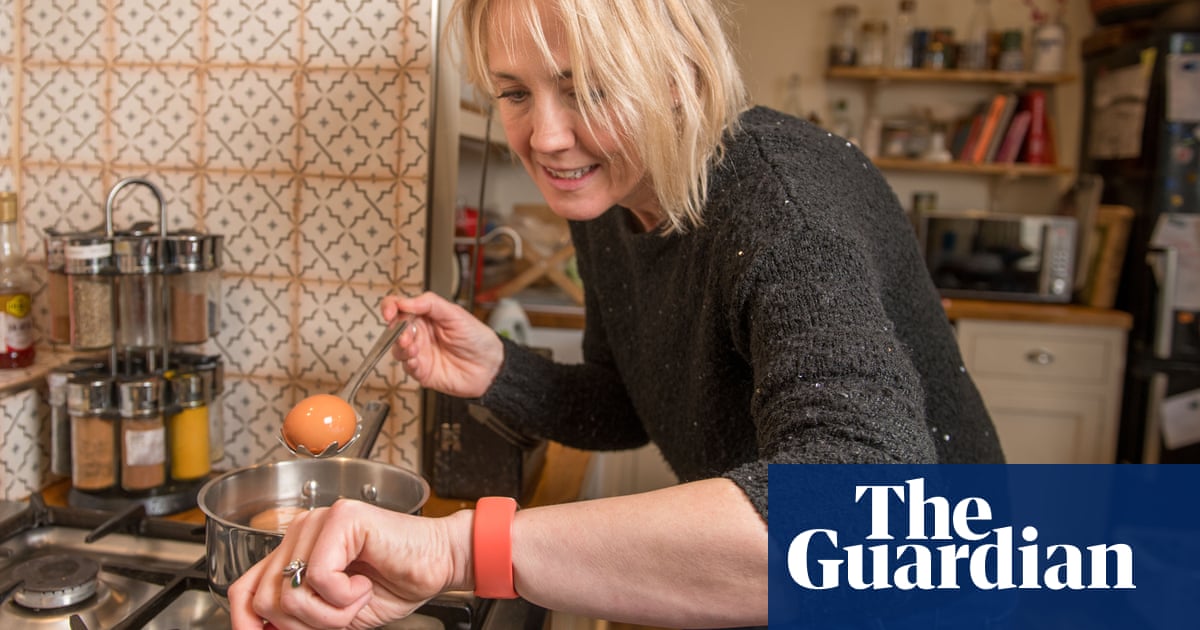Delia Smith demands one minute of simmering plus six of standing with the pan lid on. Heston Blumenthal brings his to the boil from cold. Now scientists have weighed in on the perfect way to boil an egg, and the results are egg-stremely tasty.
From a materials perspective, cooking an egg within its shell is more complicated than it might at first seem. Chefs are challenged by the fact that an egg’s components: yolk and white, are made of different proteins that denature and thicken at different temperatures: 85C (185F) for the white and 65C (149F) for the yolk.
Also problematic, is that the yolk cannot be heated separately from the white, unless they are literally separated and cooked in different vessels. Because of this, the white and outer sphere of yolk are often overcooked, while the centre might be underdone.
In 2002, the French molecular gastronomist Hervé This proposed an alternative solution: cooking the egg in a water bath at 65C for at least an hour. This “sous vide” method imbues the yolk with what he claims is an unparalleled flavour and texture. However, it also means the white does not fully set.
The new approach, known as “periodic cooking”, was inspired by a technique previously developed to create layers within plastic objects. “It enables us to have one material, in one piece, but with different structures and therefore different properties,” says Ernesto Di Maio, a materials scientist at the University of Naples Federico II, whose lab invented it.
It was a friend who suggested he try applying it to food. “After all, our famous, superstar chef in Italy, Carlo Cracco, sells eggs for €80 each,” Di Maio says.
His PhD student Emilia Di Lorenzo mathematically modelled the transfer of energy through the different layers of an egg, plus their cooking dynamics, to come up with a basic method. She then refined it using computational fluid dynamics software.
The technique involves alternating an egg between a pan of boiling water kept at 100C and a bowl kept at 30C every two minutes, for 32 minutes (eight cycles in total).
By interrupting the transfer of heat from shell to centre, the yolk’s temperature never rises above 65C. “It only reaches a gel-like state,” says Di Lorenzo. The research was published in Communications Engineering.
Trying to replicate this in my own kitchen was no yoke.
I borrowed an aquarium heater from my son’s fish tank to set up the 30C water bath, but each time I reintroduced the hot eggs, the temperature rose. This meant I needed to reset the stopwatch, quickly add some additional cold water, and keep a record of how many transfers I’d done – all before the next two minute timer went off – and then transfer the eggs back to the pan, without dropping any.
As time ticked by, I grew increasingly sceptical – how on earth was the yolk going to remain soft, when my eggs had spent a total of 16 minutes in boiling water?
But science won out. My first attempt was, in fact, too liquid, which Di Maio attributed to using too large an egg. “We based these calculations on a 68g egg. If your egg is much larger, you should increase the cooking time by about 20 seconds each cycle,” he suggested.
On my second attempt, I cracked it: the white was gelatinous; the yolk a gel-like liquid. Compared with a control egg cooked the Delia way, the periodic yolk was creamier with a greater depth of flavour.
Di Lorenzo has also used nuclear magnetic resonance and high-resolution mass spectrometry to analyse the nutritional composition of periodic eggs, against sous vide and soft-boiled ones. Doing so suggested that the periodically cooked yolks contained more polyphenols – micronutrients with purported health benefits.
Di Maio says he now boils all his eggs this way, and his friends and family thank him for it: “Of course, it takes time. But I think it’s good to dedicate some time for the people you love.”
I ask Di Lorenzo if she feels the same way. She pauses, and looks a little sheepish: “I don’t really like eggs,” she says.
Article by:Source: Linda Geddes















